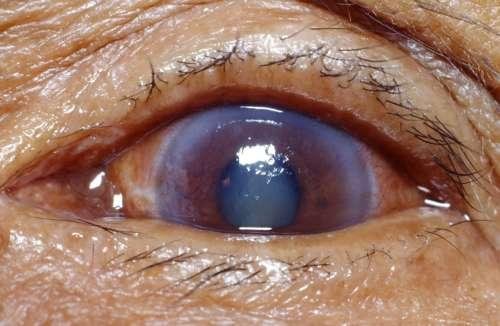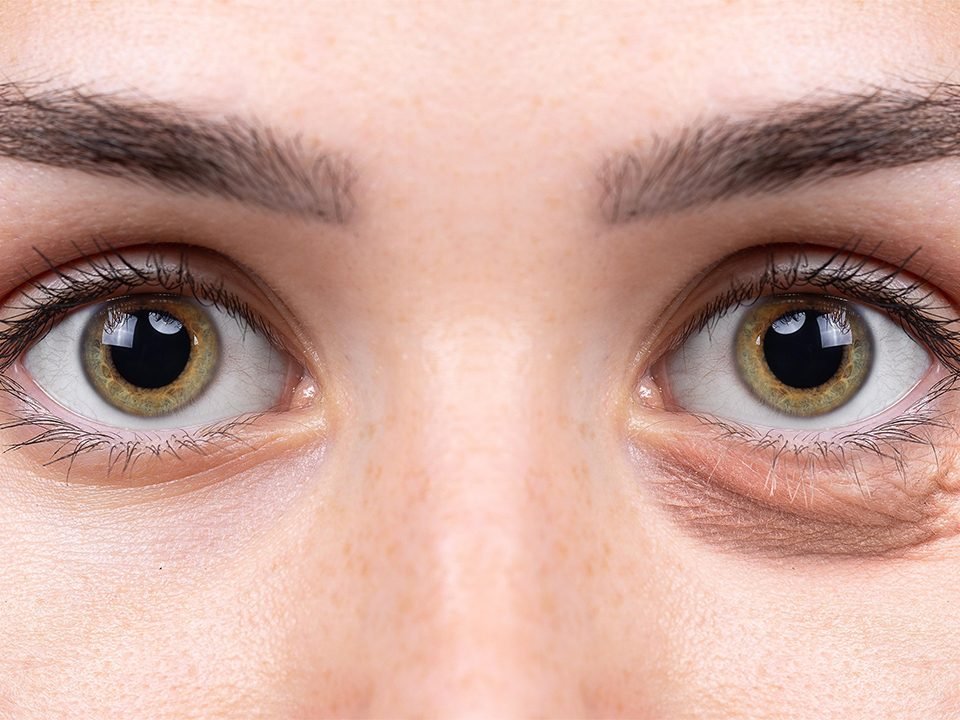Keratoconus is a progressive condition. in which the cornea thins and develops a cone-shaped bulge. The condition affects the structure of the cornea, which cannot maintain the eye's natural round shape, leading to impaired vision.
In the early stages, this condition can be treated with glasses or contact lenses, but as the eyesight continues to deteriorate over time, the treatment with Intacs implantation may be the optimal solution.
WHAT ARE INTACS FOR KERATOCONUS?
Intacs are tiny, clear arches made of specialised plastic. They are inserted into the internal structure of the cornea to provide strength and stability. When inserted into the eye, the device flattens the cornea to restore the natural dome shape.
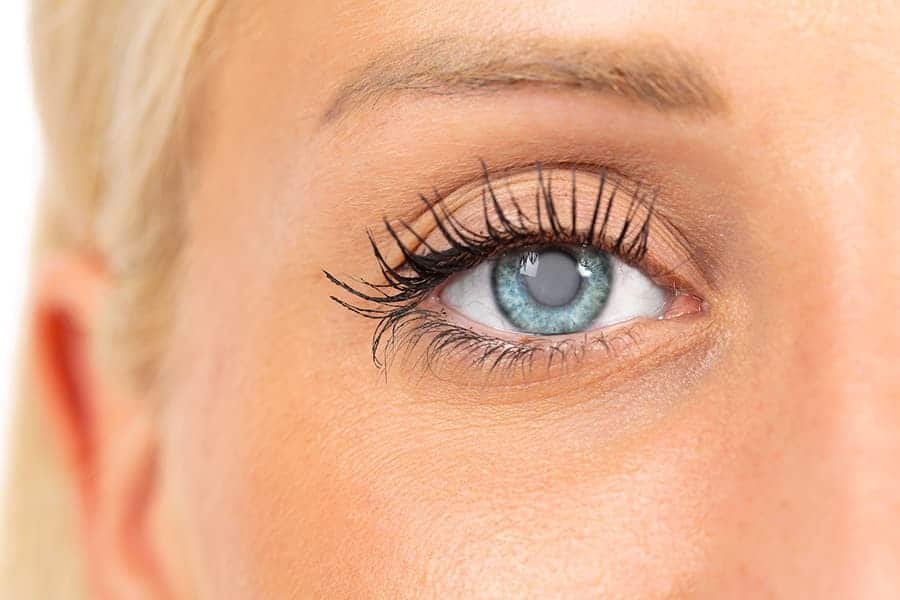
This procedure can help correct visionbut often still requires the client to wear glasses or contact lenses. Some clients who previously could not wear contact lenses because of the discomfort associated with the deformed cornea can now wear them comfortably, as the bulge flattens.
SLOWING OF KERATOCONUS PROGRESSION
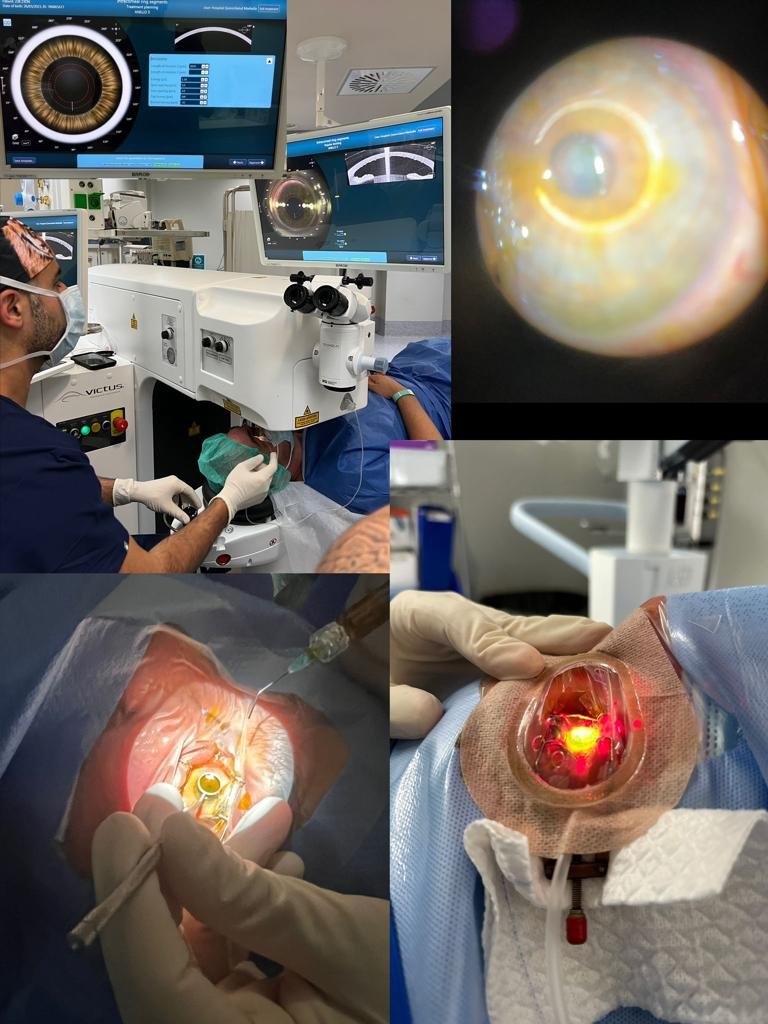
This treatment has a very important added benefit. It works to slow the progression of keratoconus. Residual vision problems can be treated with PRK. The implantation of this innovative medical device can help prevent significant visual impairmentblurred vision and other symptoms such as sensitivity to light.
The procedure consists of several steps:
- The eye is numbed with topical anaesthetic drops.
- The eye will be kept open with a special device to stop the blinking, but this is not uncomfortable.
- A small incision is created with our advanced laser system.
- The layers of the cornea are smooth and
delicately separated, and the Intacs. device is placed in the ideal spot to flatten the bulge in the cornea.
PROTECTING YOUR EYES FROM KERATOCONUS

The micro-thin, semicircular Intacs rings are gently and precisely inserted into the corneaflattening the cone-shaped protrusion and altering the shape and location of the protrusion.
These tiny rings reshape the shape of the cornea and strengthen it, treating contour irregularities to improve vision. Depending on the extent of the condition, you may still need to wear glasses or contact lenses, but your eyes are now strengthened and protected from the most severe stages of keratoconus.
World-class vision correction treatments
If you have been diagnosed with keratoconus, you are likely to feel anxious and worried about losing your vision. Dr. Ali Nowrouzi and the professional team are 100% committed to provide state-of-the-art solutions for keratoconus.
Dr. Nowrouzi's credentials, experience, track record and inventions have led to his reputation as one of the world's top eye surgeons, and he serves clients locally and around the world.
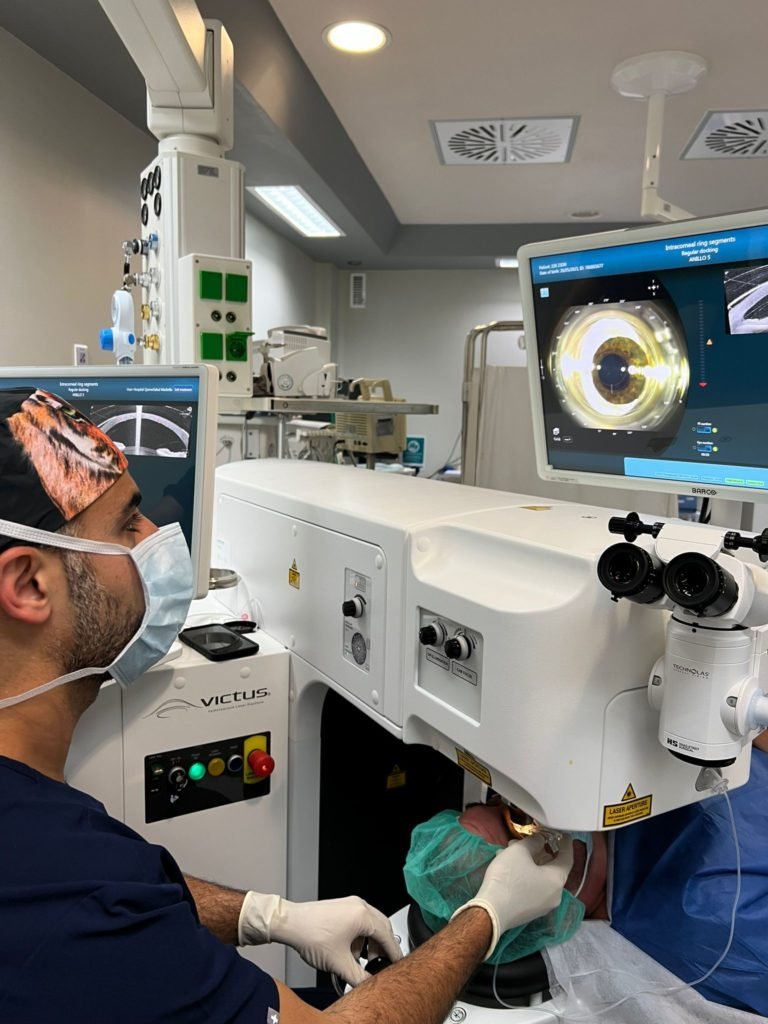
Keratoconus is an ectatic corneal disease. characterised by progressive structural deformation and thinning of the cornea affecting up to 1:375 in some special populations.
The most commonly studied techniques for the treatment of keratoconus are the intrastromal corneal ring segment (ICRS) and collagen cross-linking (CXL).
However, Dr. Nowrouzi, a specialist in corneal diseases and pathologies with years of experience in the treatment of this corneal pathology and as an active member of the international keratoconus society, tries to help his patients with modern, state-of-the-art techniques such as topographically and wavefront-guided photorefractive keratectomy (ttPRK) with or without phakic intraocular lens implantation (pIOL) and CXL.
Combination approaches such as ICRS or PRK-crosslinking (CXL) protocols aim to regularise the cornea, but such treatments do not address the patient's refractive problems, especially in the presence of high anisometropia.
Because of this, phakic Intraocular lenses (IOLs) play a key role in the visual rehabilitation of patients with keratoconus, who often suffer from high refractive errors with significant levels of anisometropia, limiting the use of spectacles.



